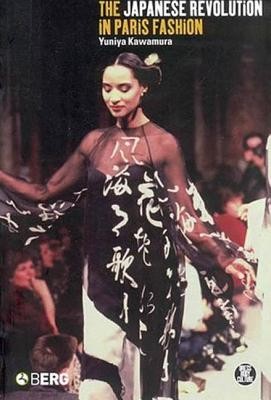
- We will send in 10–14 business days.
- Author: Yuniya Kawamura
- Publisher: Berg 3pl
- ISBN-10: 185973815X
- ISBN-13: 9781859738153
- Format: 15.5 x 23.4 x 1.1 cm, minkšti viršeliai
- Language: English
- SAVE -10% with code: EXTRA
Reviews
Description
Despite recent challenges from New York, London and Milan, Paris is renowned as the greatest fashion capital in the world. Its distinctive categorization of haute couture, demi-couture, and prt--porter reflects a highly structured and tightly controlled system that non-western designers have had difficulty penetrating. Yet a number of the most influential Japanese designers have broken into this scene and made a major impact. How? Paris couturiers and designers operate a gate-keeping system that is not only exclusive and rigorous but highly demanding. But, Kawamura asks, does the system facilitate or inhibit new forms of creativity? She shows how traditional French fashion has been both disturbed and strengthened by the addition of outside forces such as Kenzo Takada, Issey Miyake, Yohji Yamamoto, Rei Kawakubo and Hanae Mori. At the same time she considers many other key questions the contemporary fashion industry should be asking itself. Has it, for example, become primarily preoccupied with the commercial projection of product images rather than with the clothing itself? And what direction will French fashion take without Saint Laurent, Miyake and Kenzo? This insightful book provides the first in-depth study of the Japanese revolution in Paris fashion and raises provocative questions for the future of the industry.
EXTRA 10 % discount with code: EXTRA
The promotion ends in 23d.22:47:01
The discount code is valid when purchasing from 10 €. Discounts do not stack.
- Author: Yuniya Kawamura
- Publisher: Berg 3pl
- ISBN-10: 185973815X
- ISBN-13: 9781859738153
- Format: 15.5 x 23.4 x 1.1 cm, minkšti viršeliai
- Language: English English
Despite recent challenges from New York, London and Milan, Paris is renowned as the greatest fashion capital in the world. Its distinctive categorization of haute couture, demi-couture, and prt--porter reflects a highly structured and tightly controlled system that non-western designers have had difficulty penetrating. Yet a number of the most influential Japanese designers have broken into this scene and made a major impact. How? Paris couturiers and designers operate a gate-keeping system that is not only exclusive and rigorous but highly demanding. But, Kawamura asks, does the system facilitate or inhibit new forms of creativity? She shows how traditional French fashion has been both disturbed and strengthened by the addition of outside forces such as Kenzo Takada, Issey Miyake, Yohji Yamamoto, Rei Kawakubo and Hanae Mori. At the same time she considers many other key questions the contemporary fashion industry should be asking itself. Has it, for example, become primarily preoccupied with the commercial projection of product images rather than with the clothing itself? And what direction will French fashion take without Saint Laurent, Miyake and Kenzo? This insightful book provides the first in-depth study of the Japanese revolution in Paris fashion and raises provocative questions for the future of the industry.


Reviews